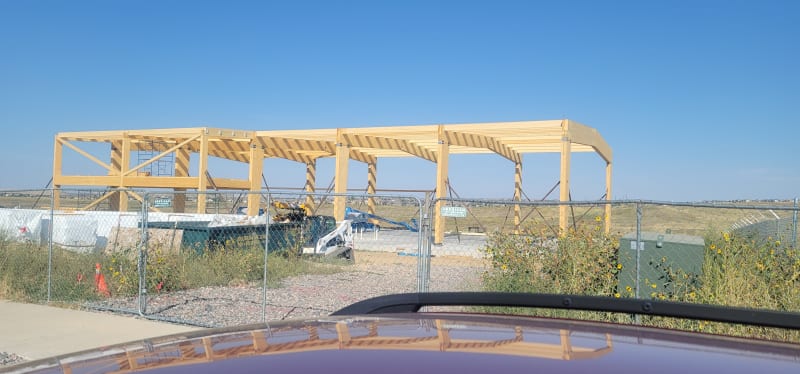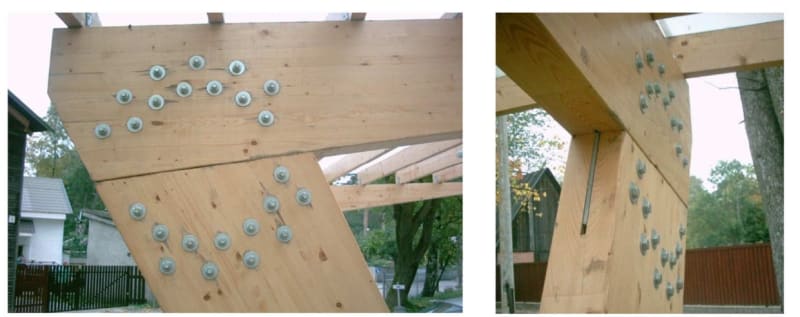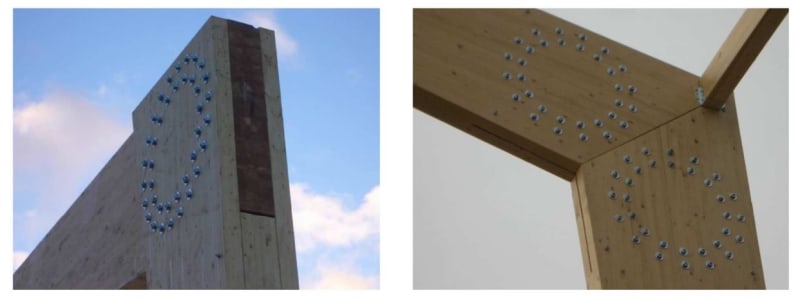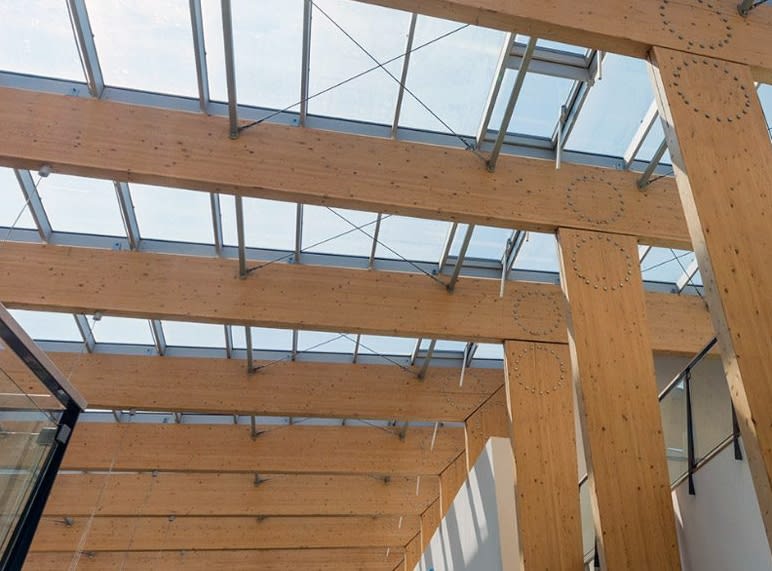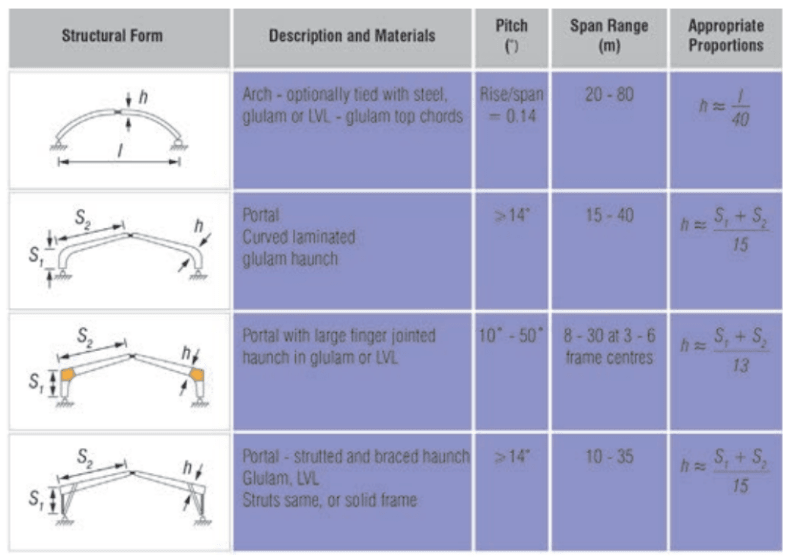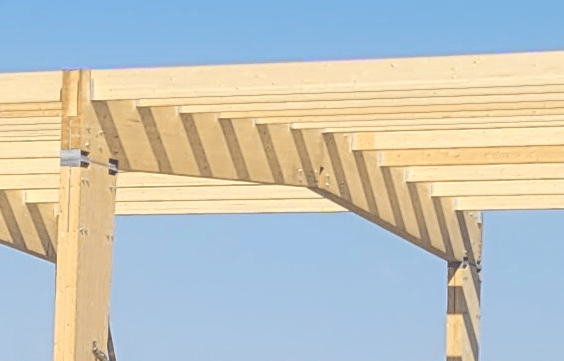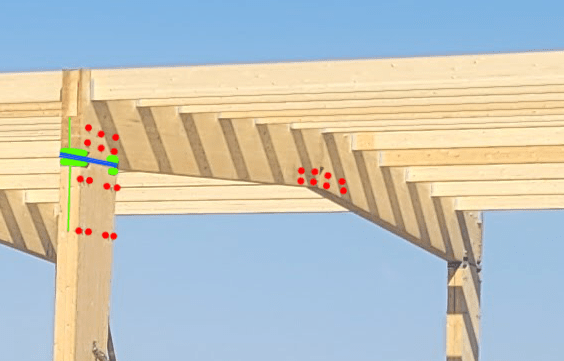nivoo_boss
Structural
- Jul 15, 2021
- 132
Hey everyone!
So I need to design a house and the client wants the interior to be spacious. The problem is, I'm not too familiar with timber design and I can't really decide if the frame I drew is even feasible with timber. So I came here to get some advice. My main problem is in-plane stability of the frame. I'm thinking of a moment frame with stiff joints at nodes B and D. I can choose the spacing of the frames myself, so at first I made a rough model with loads with a 4 m spacing and the largest moment in that joint was ~60 kNm. But the client would accept if I added a tension rod between B and D nodes as well, even though it would not solve my in-plane stability problem.
What would you suggest? Is it feasible to design these joint B and D as moment joints or would be some other form of lateral restraint better? As for the latter, a ceiling full of bracings probably is not going to do it with the client.
Some pics, the first one is my diagram with dimensions. The second one is from the architectural model - with red I highlighted the frame under question and with green end frames where some struts and ties might be possible to place.
Oh, and I work with Eurocodes.
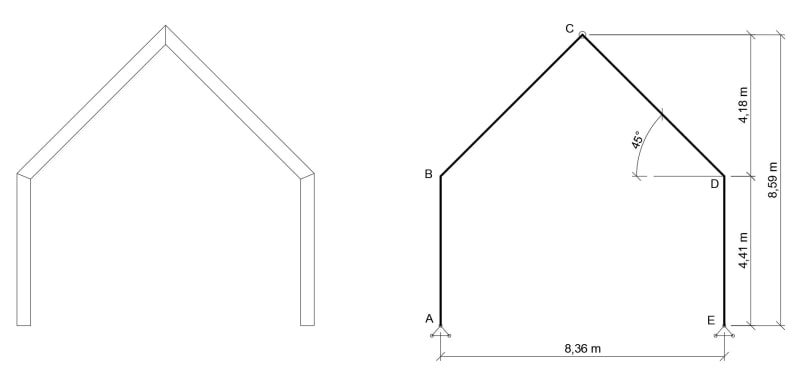
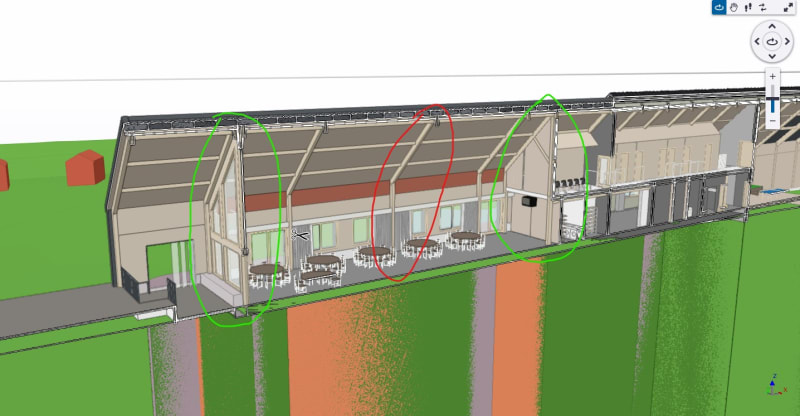
So I need to design a house and the client wants the interior to be spacious. The problem is, I'm not too familiar with timber design and I can't really decide if the frame I drew is even feasible with timber. So I came here to get some advice. My main problem is in-plane stability of the frame. I'm thinking of a moment frame with stiff joints at nodes B and D. I can choose the spacing of the frames myself, so at first I made a rough model with loads with a 4 m spacing and the largest moment in that joint was ~60 kNm. But the client would accept if I added a tension rod between B and D nodes as well, even though it would not solve my in-plane stability problem.
What would you suggest? Is it feasible to design these joint B and D as moment joints or would be some other form of lateral restraint better? As for the latter, a ceiling full of bracings probably is not going to do it with the client.
Some pics, the first one is my diagram with dimensions. The second one is from the architectural model - with red I highlighted the frame under question and with green end frames where some struts and ties might be possible to place.
Oh, and I work with Eurocodes.




